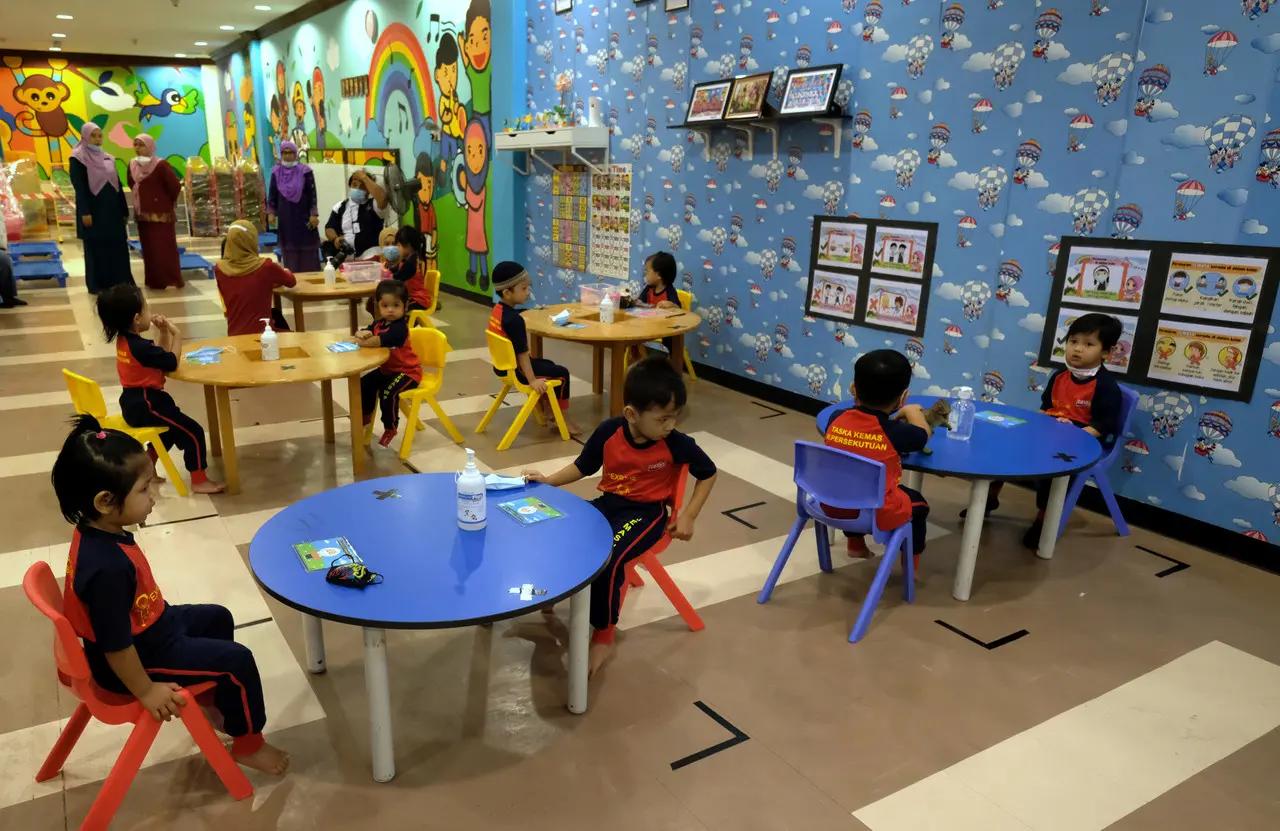
Published by AsiaNewsToday, image by AsiaNewsToday.
Due to its complexity involving emotional trauma, household neglect, and possible broken or disrupted family relationships, child abuse has become an “emergency” social issue that needs to be accorded policy priority as part of the wider efforts in tackling domestic violence and neglect.
Last month, a 4-month-old boy was in a comatose state after being abused at a child care centre in Terengganu where the baby was said to have suffered from brain haemorrhage and a fractured skull (see “Four-month-old boy in coma, believed to have been abused at child care center in Terengganu”, Malay Mail, January 10, 2023).
Sadly, it isn’t the first time that this kind of child abuse incident happened to infants which have even resulted in deaths.
Back in 2018, the nation was shocked by the news of baby boy’s body named Adam Rayqal who was found in the freezer of a refrigerator at the babysitter’s house. A post-mortem conducted found that the cause of death is due to brain haemorrhage and skull fracture.
Another example was in January 2019 whereby a nine-month-old baby died because of bleeding in the brain and fractures on the left side of the skull after being allegedly abused by a babysitter that operated an unlicensed child care centre (see “Malaysia’s deadly babysitters”, The Asean Post, October 4, 2019).
In 2021, the Welfare Department recorded a total of 217 abuse cases nationwide at child care centres.
According to the Royal Malaysian Police (PDRM)’s Sexual, Women and Child Investigation Division (D11), 2,055 suspects were arrested for child abuse from the year 2019 up until April 2022, and out of that overall figure, 504 were child minders or maids, and 317 were introduced by friends or neighbours (see “Families with no access to ‘proper’ childcare forced to use unregistered options”, The Star, July 25, 2022).
Section 2 of Child Care Centre Act 1984 (Act 308) defines a “child care centre” as any premise at which four or more children, under the age of four years from more than one household are received to be looked after for payment.
The two categories of child care centres (down from the four categories prior to the 2006 amendment) under Section 5 of the Child Care Centre Act (1984), as amended in 2006, are:
- Home-based child care centre – which is a child care centre receiving less than ten children (under Section 7); and
- Institution-based child care centre – which is a child care centre which receiving ten or more children.
It’s very concerning that both of the types of child care centres have been (equally) vulnerable to child abuse cases, including some of the most appalling and horrific injuries ever to be inflicted on a non-adult and at times, life-threatening or resulting in deaths.
Some of the injuries can’t be seen from outward appearances (“invisible injuries”) such as traumatic brain injuries (bleeding in the brain) and soft tissue injuries (involving the muscle, tendons or ligaments). There’s also the mental and emotional trauma – resulting in depression – which can initially be difficult for the parents to detect. This may in turn result in the abuse continuing or persisting for a longer period of time.
It goes without saying that many internal and external factors contributing to abuse at child care centres and nurseries mainly revolve around the operators and child minders/carers.
For example, undue stress causing the child minder or carer to snap might be a common reason why child abuse happens. Furthermore, such external factor aggravates the internal predisposition of the childminder or carer who’s already prone to aggressive tendencies such as anger outburst.
According to the PDRM’s Sexual, Women and Child Investigation Division (D11), in addition to negligence, personal idiosyncracies like hot temper, irritability and uncontrollable emotions of the child minders or carers are also among the causes of child abuse (see “Malaysia’s deadly babysitters”, The Asean Post, October 4, 2019).
The Director of the Universiti Teknologi Malaysia (UTM) Counseling Centre, Dr. Zulfikar Ahmad, has said that one of the main reasons for cases of abuse at the child care centres and nurseries has been the pressure on the child minders/carers from the work environment (e.g., lack of adequate resources in terms of manpower) and personal problems (e.g., finances).
With the dreadful spectre of child abuse figures worsening year by year, parents will be extremely anxious about their children’s safety at child care centres and nurseries.
At the same time, this raises another basic question, i.e., regarding the quality of services in child care centres managed by both public and private providers in terms of the child-to-staff ratio, qualifications of the carers and also overall general safety of the children (e.g., protection from occupational/workplace hazards like the danger and risk of swallowing a foreign object and accidents).
The ideal child minder/carer-to-children ratio set by the Welfare Department is one child minder/carer for every three children aged between 2 months old and 3 years old at the child care centres and nurseries.
Overcrowded centres will eventually not only decrease the quality of services provided but also open up the possibility or potential of abuses taking place.
The low number of skilled/professional/qualified child minders and carers to meet high demand in managing young children at child care centres is a matter of policy concern (see, “80% of child minders at kindergartens still not qualified”, New Straits Times, August 13, 2018).
This is despite the minimum qualification as mandatorily required that the staff must have a certificate under the Permata Early Childhood Care and Education (ECCE) course managed by the Welfare Department – beginning from January 1, 2013 for a duration of 144 hours with 40 hours practical amounting to 29 days full-time.
All staff – management and child minders/carers – are expected to attend and pass the Permata ECCE course within twelve working months, according to Regulations 54 in the Child Care Centre Regulation 2012.
What’s more is also the enforcement by the authorities in monitoring the services of existing child care centres and nurseries.
The Welfare Department of the Ministry of Women, Family and Community Development (MWFCD) is in charge of the registration, inspection and enforcement of child care centres and nurseries as well as ensuring the safety, well-being and development of the children.
However, the Welfare Department as the regulator and inspector is currently understaffed.
Based on the research conducted by the Malaysian Administrative Modernisation and Management Planning Unit (MAMPU), the social welfare worker-to-population ratio in Malaysia is 1:8,576. The gap is relatively huge compared to other countries such as Singapore (1:3,448), UK (1:3,025), US (1:490), and Australia (1:1,040).
Former minister (WFCD) Datuk Seri Rina Mohd Harun has said that the current ratio for child protection officers is 1:50-100 children compared to the ideal ratio which is 1:30-35 children nationwide.
There’s also the issue of coordinating the standards of child care centres and nurseries – which can differ from one state to another by way of the respective local authorities.
Hence, there’s an urgent need to coordinate the standards so that it’s more uniform throughout the country.
Setting the requirements for both public and private child care services such as basic guidelines, including criminal background checks for all staff and the requisite professional experience must be uniformly/equally stringent and rigorous.
In dealing with and preventing child abuse particularly in child care centres and nurseries, EMIR Research would like to propose the following policy proposals for consideration:
- Psychometric tests
The psychometric tests (e.g., Myers-Brigs Type Indicator, Big Five Personality Traits) measure interests (in relation to motivation, values and opinions), personality (as concretely assessed in the interaction with people and surrounding environment) and aptitude (ability to carry out different tasks well and satisfactorily) to find the best match in attitude and cognitive abilities for the job.
This test will act as a pre-employment screening that’s mandatory for new child minders and carers in all child care centres and nurseries.
As behaviour and personality traits are difficult to detect during the interview, a psychometric test is one of the ways to evaluate one’s temperament and suitability.
Meanwhile, all staff members will have to undergo psychological tests such as DASS (Depression, Anxiety and Stress Scale) periodically once a month to determine the level of their psychological well-being – as interaction with children will require an individual to be in their best mental health condition.
- Spot checks
The Welfare Department must monitor all child care centres and nurseries in the country by regularly conducting inspections not just of the public child care centres (under the care of the MWFCD), but also the privately registered entities.
Random and spot or surprise checks, instead of performing scheduled ones with advance notice, should be the norm and accorded preponderant weightage – to encourage strict adherence with the standard operating procedures (SOP), including the child minder/carer-to-child ratio.
- Staff training
Strategic partnership between the Welfare Department (JKM) with the Malaysian Association of Social Workers (MASW) and non-governmental organisation (NGOs) together with the Human Resource Development Fund (HRDF) in addressing the issue of shortages of social welfare workers, child protection officers and child minders/carers should be forged and fostered.
Basic specialist training for social welfare officers should be provided as they’re typically trained in areas that have no (direct) relation with child care protection.
At the same time, issues such as the ratio and quality of training should be reviewed from time to time.
Ongoing training for child minders and carers should also be mandatory to ensure the maintenance of high standards, especially in terms of the promotion of children safety.
- Digital management system
MWFCD should enforce mandatory installation of closed-circuit televisions (CCTVs) in every child care centre and nursery. And these CCTVs should be readily accessible to parents in real-time (i.e., continuous monitoring) via their smart phone (e.g., Android).
Moving a step further, the MWFCD should also look into co-developing an app (with the private sector) that’s similar to Littlelives app which should be made mandatory for all child care centres and nurseries in the medium-term – to allow for the tracking of activities such as attendance, playing time and lunchtime.
The Littlelives app helps parents to track their children’s activities at schools which can also be used to monitor for the safety of those at child care centres and nurseries.
It will also enhance parents’ engagement with the management and child minder/carer, and thereby help to build and boost trust between the two parties.
Ultimately, the government must step up and take more robust action in addressing child abuse as a policy priority.
One of the critical ways – when it comes to prevention – is to enhance the quality of services in all child care centres and nurseries.
Farah Natasya is Research Assistant at EMIR Research, an independent think tank focused on strategic policy recommendations based on rigorous research.

